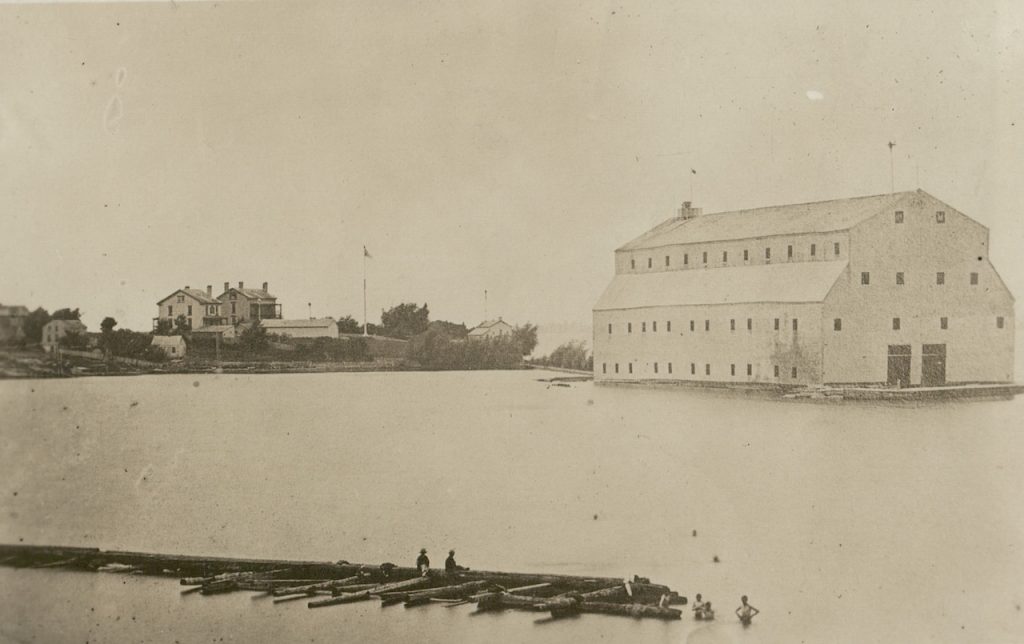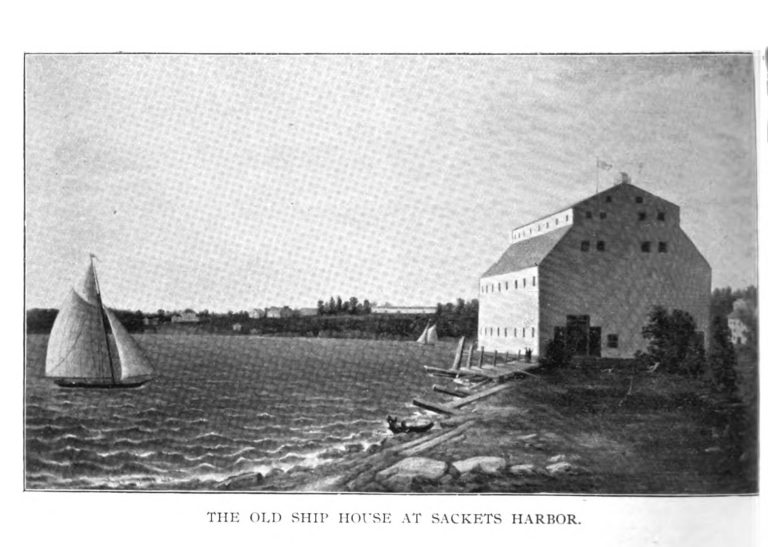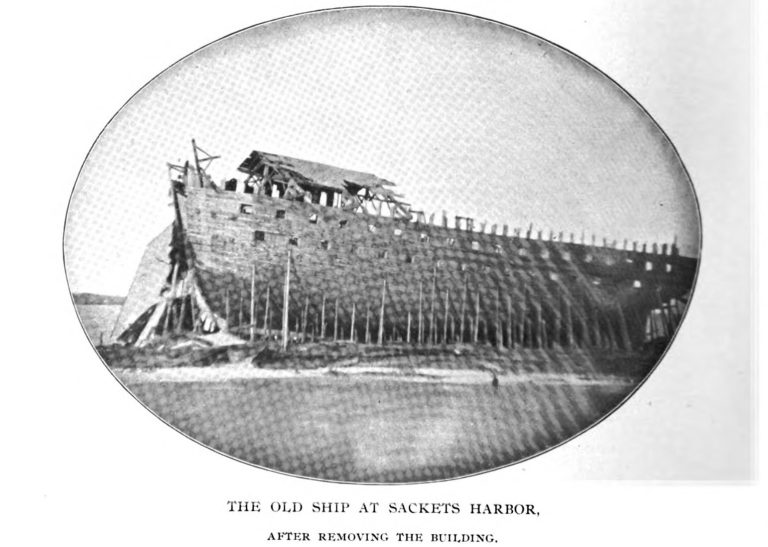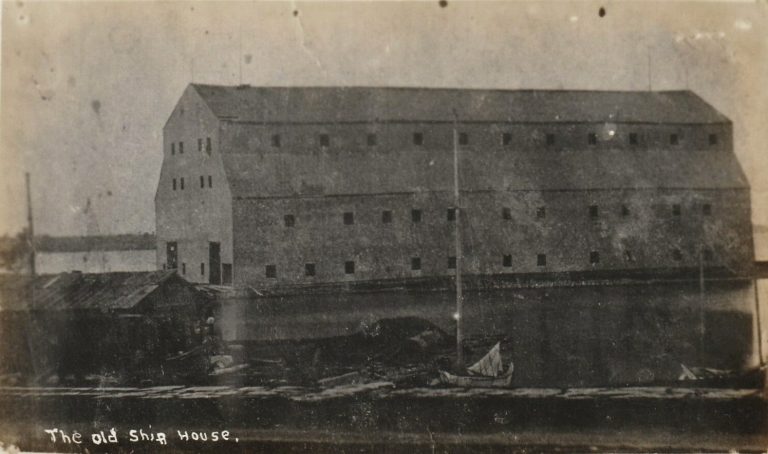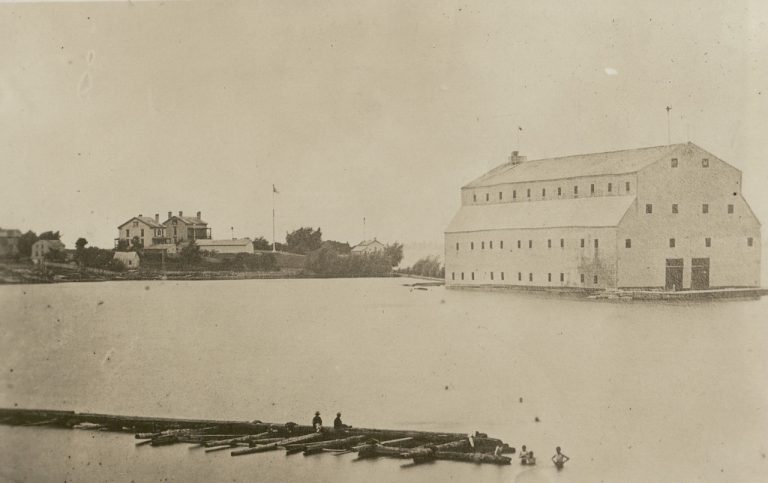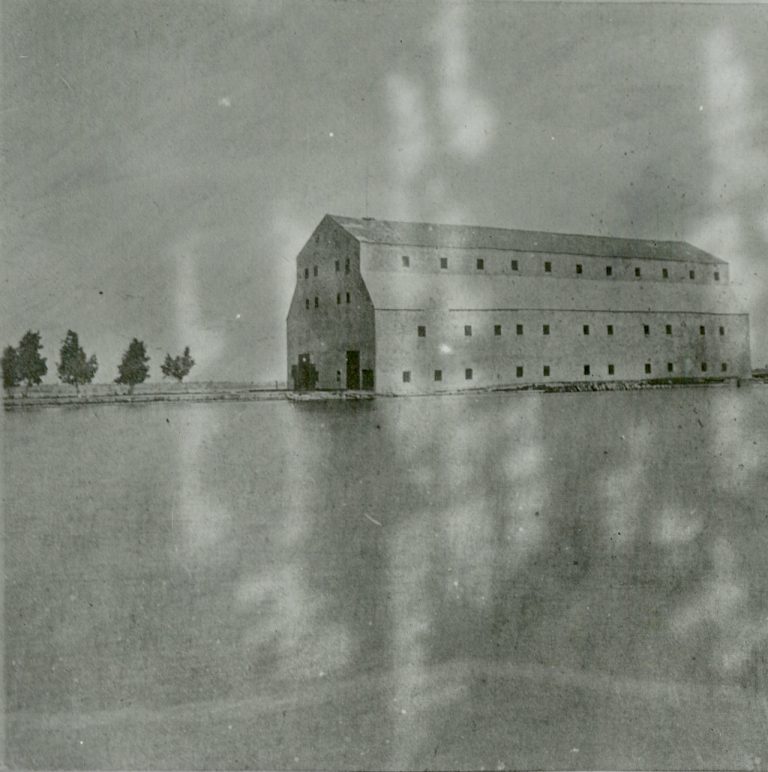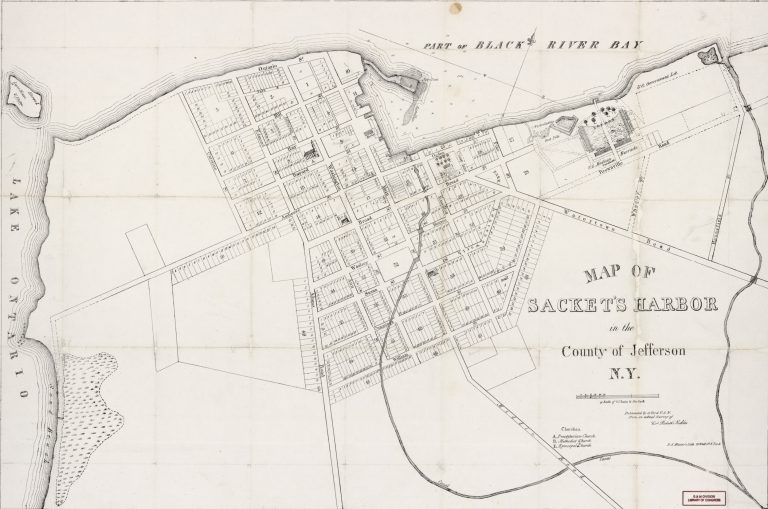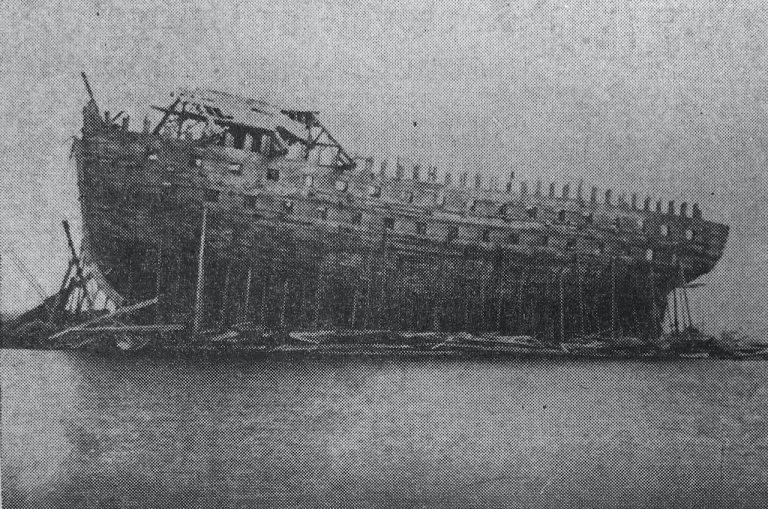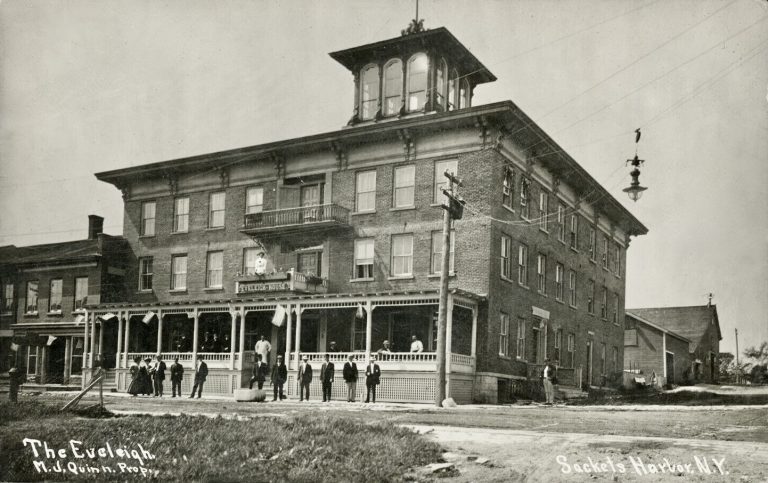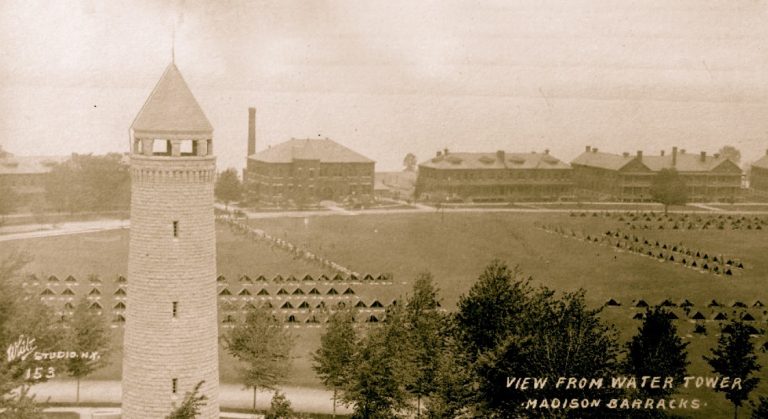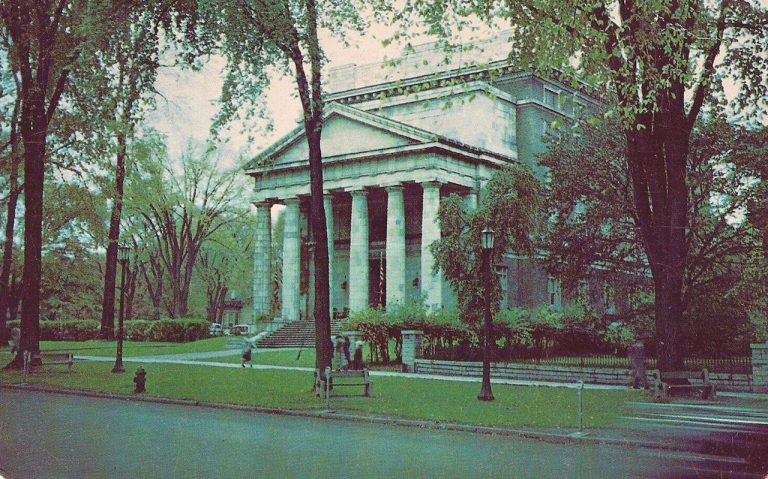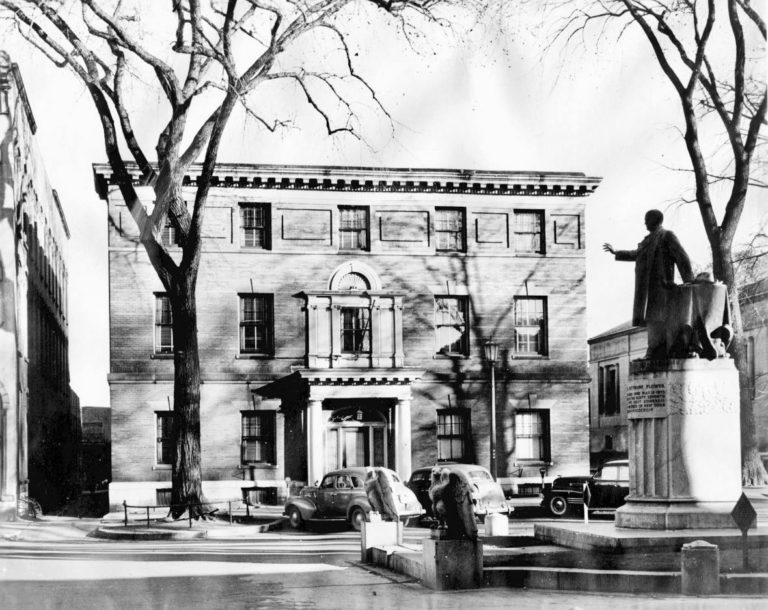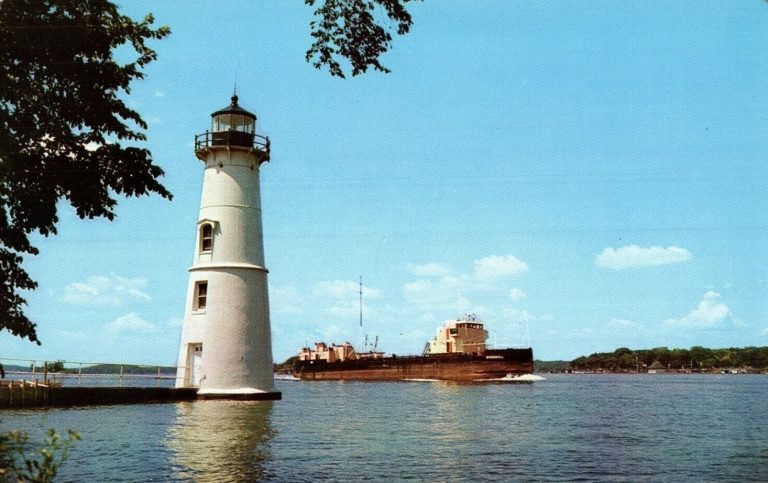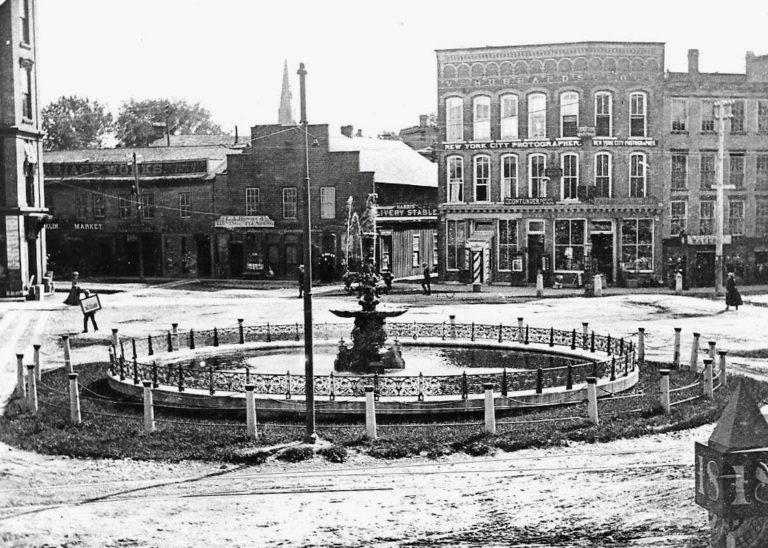Frigate New Orleans And Its Shiphouse At Sackets Harbor, Built For The War Of 1812
Constructed after the end of the War of 1812 with England, the battleship New Orleans, a 72, 74, or even 110-gunned ship, depending on the source, was never completed—yet it sat in stock for nearly 70 years before being razed. Many of those years were spent inside a shiphouse off the shore of Sackets Harbor that was built around it, becoming a spectacle and a tourist attraction.
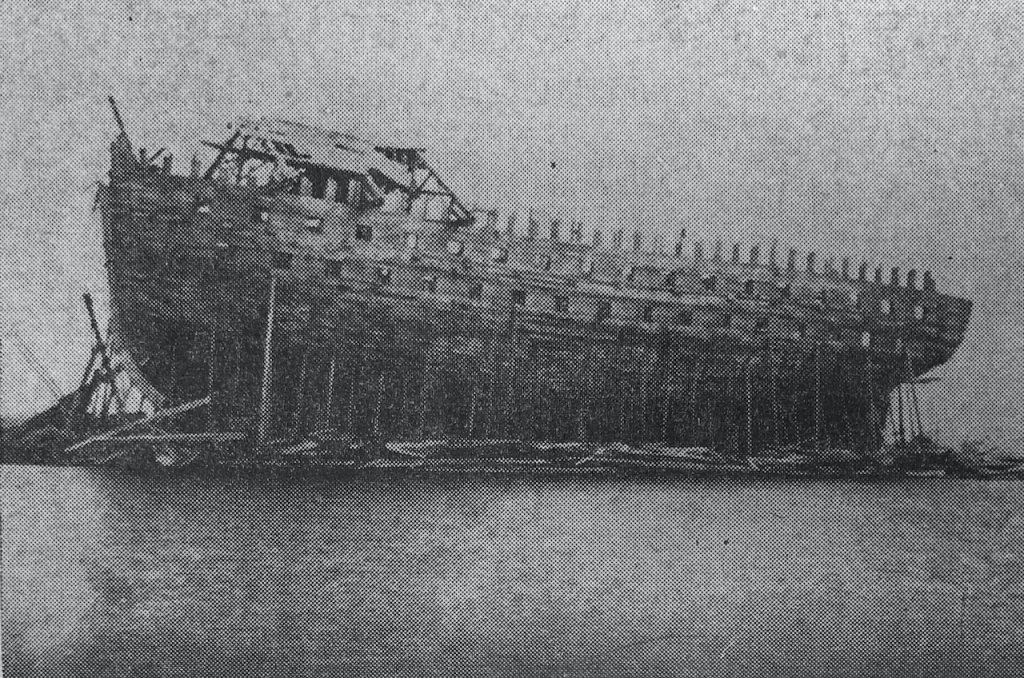
According to Growth of a Century by John A. Haddock and Eli Thayer, the construction of New Orleans, later named after General Jackson’s victory on January 8th, began around January 1, 1815, by Henry Eckford, under contract with the government. This was because the British had already launched the St. Lawrence, a three-decked, 120-gun ship that was by far the largest ship on the strategic Great Lakes. According to the Daily Times, The New Orleans was an effort to build a similarly-sized ship that would restore American supremacy, but oddly enough, the war was already technically over before construction even started.
The Police Commissioners from England and the United States declared peace on December 24, 1814, but war and its related efforts, such as battleship-building, would continue because of how long it would take for the word to spread. News of the peace pact did not reach Washington until February, and it wasn’t until March 1 that Eckford ceased work on the New Orleans which, at that point, was nearly completed.
Per The Growth of a Century–
During 60 days the immense ship had been nearly finished, the main deck was laid and supports for the bulwarks were raised. The New Orleans was intended to be used as a sort of floating battery, to be stationed at the head of the St. Lawrence River to prevent the British fleet from entering the lake.
As she was constructed entirely of green wood it was an open question whether she could ever have been navigated.
The location was chosen to build New Orleans because the depth of the Sackets Harbor was considered ideal. The location was also home to Fort Tompkins, marked #4 on the “Sacketts Harbour” lithograph drawing below from 1815.
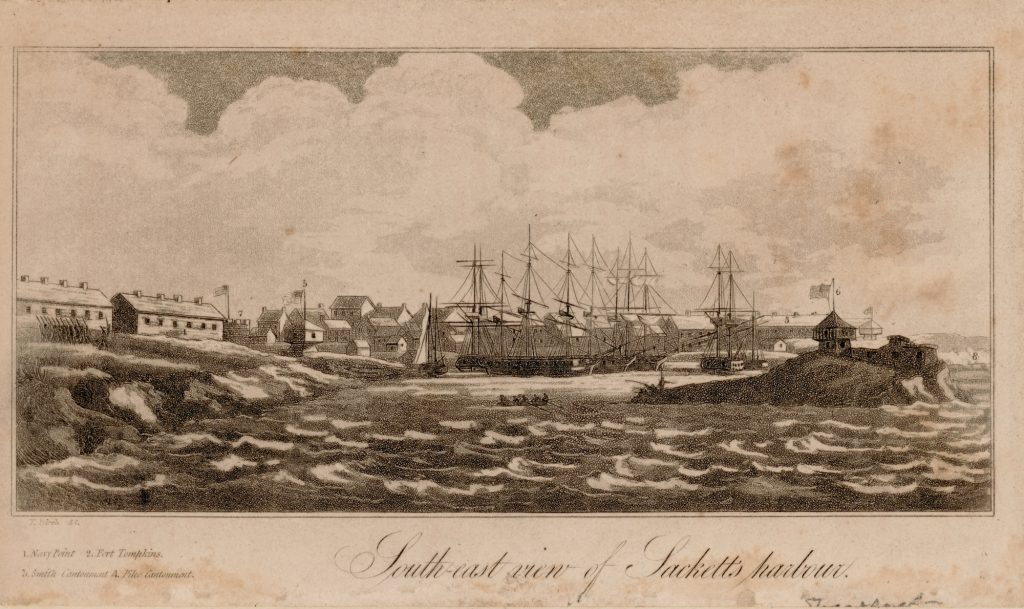
The New Orleans, per Growth of a Century, was said to be 3,200 tons burden, 187 feet length of keel, 56 feet beam, and 40 feet depth of hold and pierced for 110 guns, but could carry 120. The gun number is considerably more than reported elsewhere, and per the photo of the ship, there appears to be a total of only 74 with 32 slots on each side.
The shiphouse would be erected sometime in the 1830s at the direction of the government, who still considered the ship as a potential asset, though it was incomplete. The New York Daily Reformer would report on May 23, 1863, of the government’s continued interest–
Sackets Harbor – The Navy Department, it is understood, have ordered an examination of the old line of battle ship, New Orleans, that has made so many boys stare with wonder on their first visit to the old “Ship House,” and if found sound and sea-worthy, to be converted into a steam frigate.
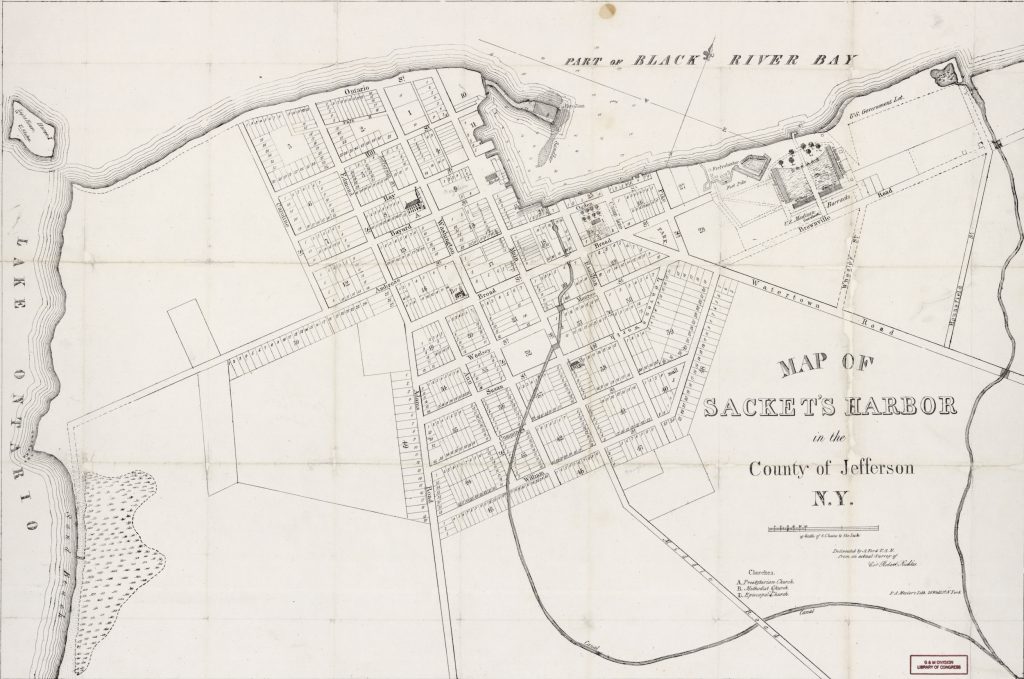
Of course, this would never be New Orleans’ future as it continued to sit for nearly two more decades when, in 1882, Congress ordered the sale of the New Orleans at auction. Alfred Wilkinson of Syracuse won the bid with $400 and reportedly made a ten-fold profit when all was said and done, though the work itself would not come without a price.
In February 1884, when the old war ship New Orleans, which had been on the stocks in Sackets Harbor since 1815, was undergoing demolition, it parted directly in the center and fell to the ground, instantly killing a workman named James Oates, and seriously injuring Ralph Godfrey, M. Jeffrey and a man named Hemens. Eight other workers narrowly escaped. Oates was terribly mutilated, a spike being forced entirely through his head and a bolt through his back.
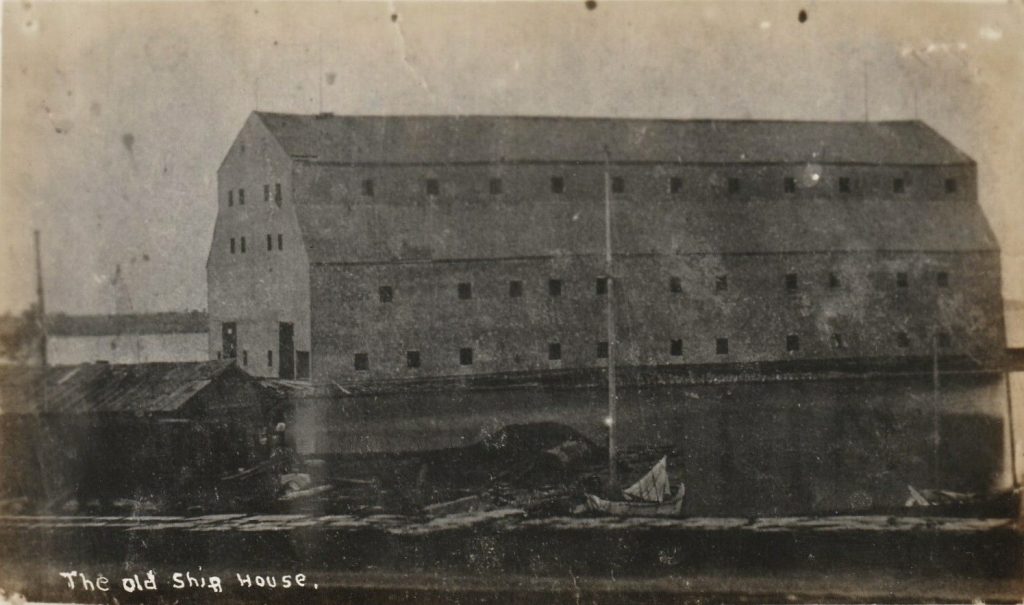
As for the ship’s remains, some of the wood was used to build local residences. Unfortunately, no names were listed, which would have been interesting for tracking where some of it ended up. Several rather unusual gifts were made from the salvaged wood. The first was a miniature boat built to resemble the frigate that ended up in Syracuse and the other was noted in the December 14, 1887, Watertown Daily Times–
The chair occupied by Col. Shaw, as chairman, was loaned by the Jefferson County Historical Society, and was made of oak taken from the old war ship “New Orleans,” recently broke up at Sackets Harbor. The oak was a gift from Col. Walter B. Camp.
The third gift was to Frank McCarthy of Oswego who received “a handsome silver-headed cane, properly inscribed,” made from some of the ship’s remnants. A fourth gift was mentioned in the January 30, 1886, edition of the Watertown Daily Times–
Judge Frederick G. Gedney, a well-known summer resident of Watertown, has presented to Amos Cummings, President of the New York Press Club, a gavel made of oak taken from the keel of the old United States ship New Orleans, at Sackets Harbor. The gavel is carved and turned, and a silver dolphin extends along the handle. The hammer is made from a bolt of Swedish iron taken from the wood above a port hole of the vessel.
